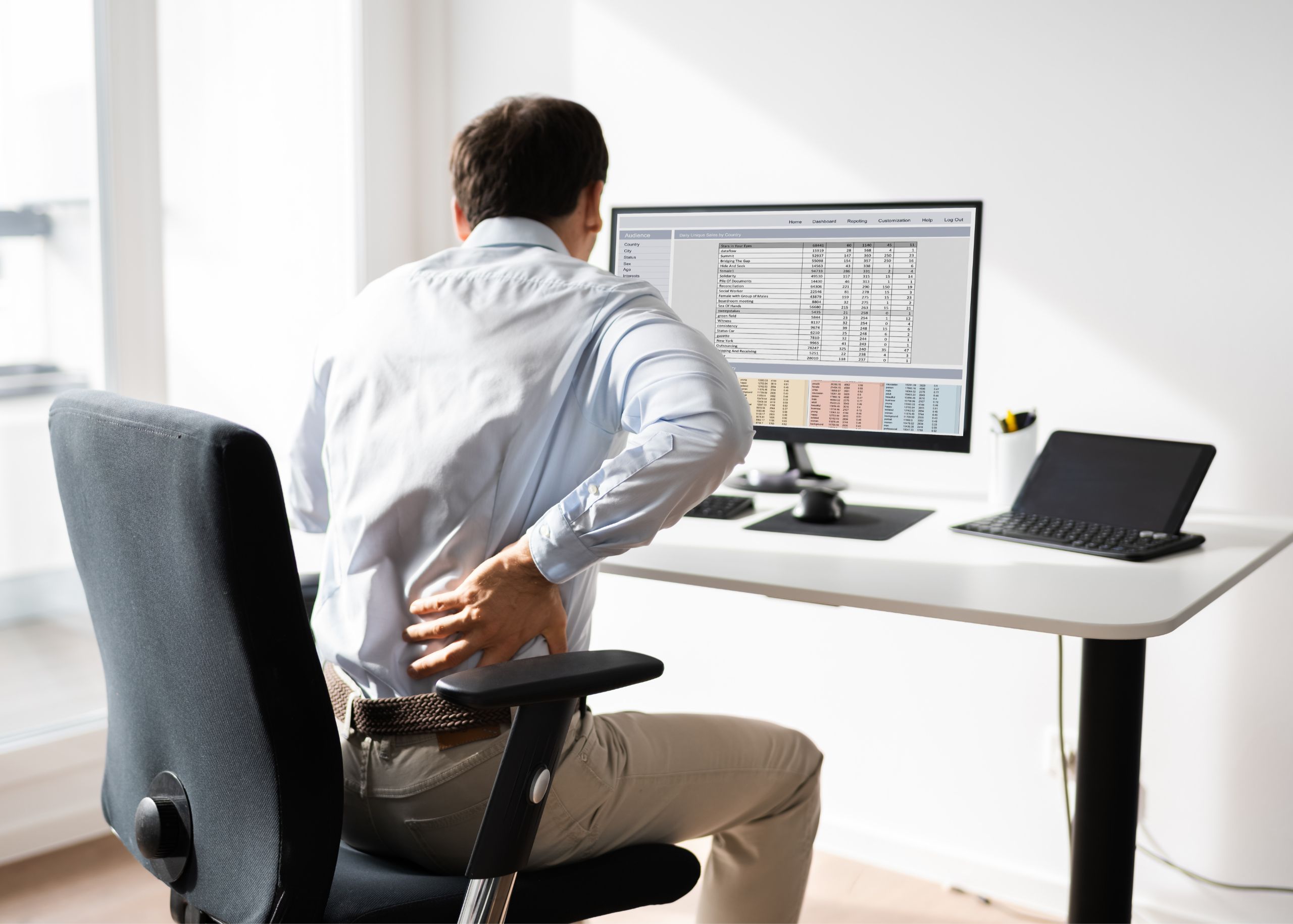Occupational health deals with injuries that may be a serious problem which could happen in an office or other work-related environment. These days, more people are getting injured and being treated for injuries arising from occupational health issues. Below are some tips to help you avoid workplace injuries.
Occupation Health Tip #1: Maintain Proper Posture
To keep your back and neck healthy:
- Sit or stand up straight.
- Roll your shoulders back when working to keep your spine aligned and free from strain, and keep your chin up. You should not be hunched over your computer or reclining in a chair for long periods.
- When sitting at a desk, keep both feet on the floor and don’t cross them or one leg over the other.
Occupation Health Tip #2: Make Sure Your Workspace is Ergonomic
Reaching across a desk to type on a laptop or keyboard, or staring at a screen farther away than it should be, can cause neck and shoulder pain over time. With an ergonomic office desk, you’re less likely to suffer from occupational health issues by reaching across a desk to type on a keyboard, or staring at a screen farther than it should be.
- Place your computer monitor directly in front of you, so you don’t have to twist your neck and shoulders to look at it.
- Position the computer mouse and keyboard within arm’s reach.
- Use an adjustable chair for sitting comfortably with your feet flat on the ground.
- If you work from home, look into purchasing a standing workstation that will allow you to stand up during the day periodically.
- Know when to take breaks from sitting.
Being sedentary can lead to eye strain and back pain, especially if you’re not following proper posture guidelines. Get up every 30 minutes, walk around the room, stretch out your legs while standing—do anything that gets your body moving again after being stationary for prolonged periods!
Occupation Health Tip #3: Take Regular Breaks
You should take regular breaks to prevent repetitive stress injuries. These injuries happen over time and are usually caused by repeatedly performing the same movements.
Examples include carpal tunnel syndrome, tendonitis, and tennis elbow. During your break, it’s a good idea to get up from your workstation, stretch, and walk around.
You should also make sure that you’re frequently changing positions while working. For example, if you stand at work all day, it may be helpful to sit down once an hour for several minutes; if you sit, it can help alternate standing every so often.
Occupation Health Tip #4: Stretch Your Neck and Shoulders
Finally, make sure you’re stretching before, during, and after work. Stretching will help keep your blood flowing and prevent many injuries mentioned above.
To stretch your neck and shoulders, do neck rolls and shoulder shrugs, making sure to rotate your head fully clockwise several times and counter-clockwise.
If you can do so safely, stretch in 10-minute intervals at least once per hour when on the computer or perform other tasks that require a lot of sitting down.
To stretch your wrists and arms, hold each arm out for ten seconds with your palm facing up or down and drop it back down slowly. Repeat this exercise five times for the best results.
Try doing hamstring stretches to loosen those muscles before returning to work for back problems. These are done most easily by standing with both feet together while lifting one leg straight back behind you and one arm before switching sides after holding for 20 seconds.
Occupation Health Tip #5: Be Aware of Your Surroundings
Here are some ways to avoid injuries while walking:
- Be aware of your surroundings. Make sure you can hear clearly, see clearly, and pay attention to what is in front of you while walking. This means:
- Avoid texting or talking on the phone when walking. Any electronic device that requires your eyes or ears may cause you to miss something important and should be avoided.
- Avoid eating or drinking while walking. This often causes a person to lose their balance, which could cause them to fall and injure themselves.
- Avoid carrying heavy objects when walking. This will slow you down but, more importantly, will distract your focus from what is in front of you.
- Avoid wearing headphones while walking. You should be listening for anything that may pop up in front of you, such as a car making a sudden stop or the sound of another pedestrian’s voice warning you about something ahead of you on the sidewalk.
- Avoid wearing loose clothing or any other loose articles (i.e., scarves) while walking; these may get caught in doors/fences/etc., putting pressure on certain parts of your body; this could result in injury if pulled too quickly by an unexpected force (such as a gust of wind).
Many Workplace Injuries can be Prevented with a Few Easily Followed Rules
It is estimated that 2.3 million women and men worldwide succumb to work-related accidents or diseases every year; this corresponds to over 6000 deaths every day. Worldwide, there are around 340 million occupational health issues and accidents and 160 million victims of work-related illnesses annually. It may seem like these injuries just happen, but many can be prevented. Let’s look at some of the most common workplace injuries and how to avoid them:
- Sprains and strains are two of the most common types of workplace injuries. These occur mostly in the back, shoulders, neck, and knees. If you need to lift something, learn how to do it properly—or ask someone else to help you!
- Cuts are another frequent type of workplace injury; they usually occur when someone is using machinery or tools that have sharp edges or points. Always wear protective equipment like gloves, masks, goggles, and closed-toe shoes when necessary (and don’t be afraid to speak up if you think your tools could use an upgrade.)
- There are many different types of burn injuries—heat burns from fire or steam; friction burns from falling on a hard surface; chemical burns from chemicals splashed in your eyes —so make sure you know what hazards exist where you work and what steps need to be taken for each one before starting a new job or working with a new substance for the first time.
Many of these injuries are avoidable if one follows simple safety protocol. This is a simple list of steps that any employee can take to prevent occupational health issues in the future. These include good posture, exercising regularly, avoiding aggressive behavior at work, and reporting injuries immediately and properly.










